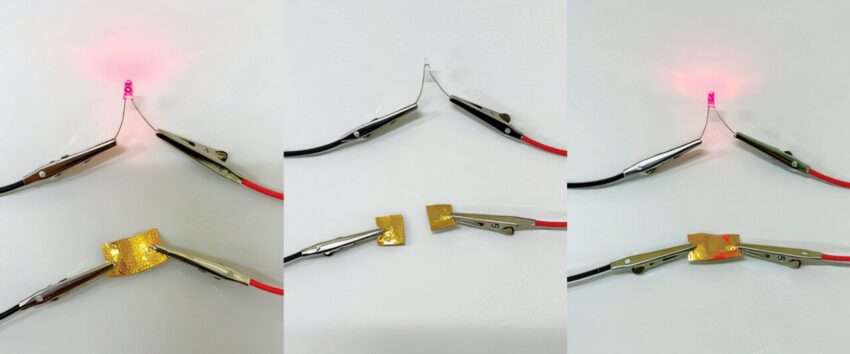Imagine a flexible electronic device that can bend, stretch, and even repair itself when damaged. Scientists in Japan have now made a major step toward that vision.
A team from the RIKEN Center for Sustainable Resource Science has developed a new self-healing polymer that can act as a flexible electrical conductor—ideal for wearable electronics and soft robots. The breakthrough, published in the *Journal of the American Chemical Society*, could lead to more durable and sustainable technologies for the rapidly growing field of flexible electronics.
Traditional conductors—like those made from metals or rigid plastics—tend to be brittle. They easily crack or break when bent or twisted, making them unsuitable for devices that must move or flex repeatedly. This limitation has slowed progress in creating flexible gadgets such as electronic skin, foldable sensors, or wearable health monitors.
“In real-world applications, flexible conductors face constant stress and strain that can cause mechanical damage,” explains Dr. Zhaomin Hou, the project leader at RIKEN. “If we can design materials that repair themselves after being damaged, we can make devices that last much longer and perform more reliably.”
Hou’s team tackled the challenge by starting with one of the most common plastics in the world—polyolefin. Found in everyday items such as packaging, bottles, and containers, polyolefins are known for their strength, low cost, and resistance to chemicals. However, they lack flexibility and the ability to heal themselves once damaged.
The researchers discovered that by adding sulfur-containing chemical groups called thioethers into the polyolefin structure, they could give the material new properties. Thioethers allow the polymer chains to reconnect after breaking, essentially “healing” the material without the need for heat or adhesives. The result is a strong yet flexible plastic that can recover from cuts or tears.
What makes this discovery especially powerful is how well the polymer works with gold—a key material used to conduct electricity. Sulfur and gold naturally form strong bonds, so when the scientists coated the new polymer with a thin layer of gold nanoparticles, the coating adhered tightly and stayed intact even under stress.
“The durability of the gold coating on this material far exceeded our expectations,” says Hou. “It remained intact after more than 50 cycles of a tape-peeling test, which is remarkable for such a flexible surface.”
The researchers achieved this by using a new type of catalyst that precisely controls how different chemical units combine during polymer formation. This method allows them to fine-tune the material’s properties, creating polymers that are not only self-healing but also highly adaptable for different uses.
Hou believes this is only the beginning. “By changing the building blocks of polyolefins, we hope to create an entirely new family of self-healing materials for flexible conductors and other advanced technologies,” he says.
If successful, this innovation could pave the way for wearable electronics and robotic systems that are lighter, longer-lasting, and able to repair themselves—bringing us closer to a truly resilient future for technology.
https://knowridge.com/2025/11/scientists-create-self-healing-flexible-polymer-for-next-generation-wearable-electronics/
